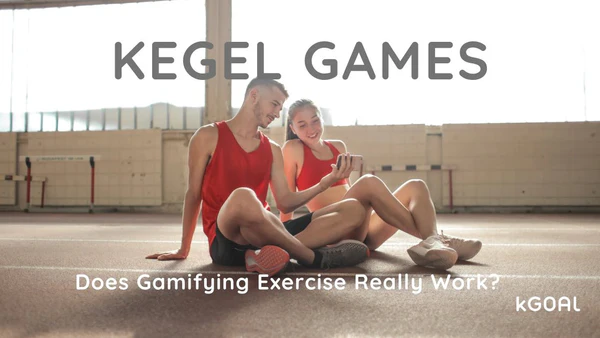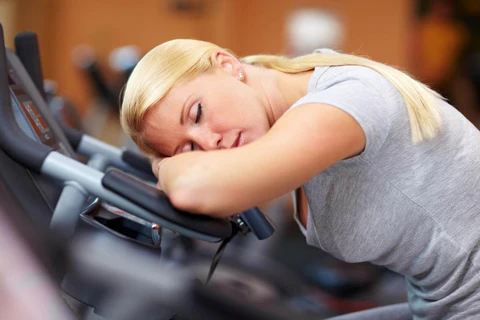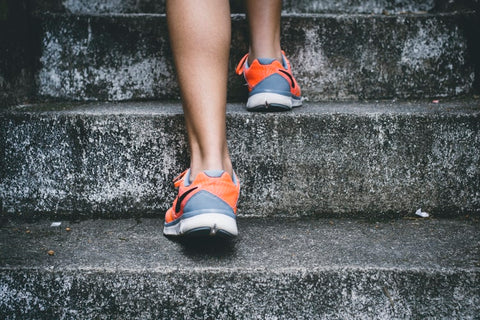Kegel Games: Does Gamifying Pelvic Floor Exercise Work?
Published October 11, 2025

Exercise is like almost any activity: if there’s no variety thrown in, you can get bored pretty quickly. This goes double for pelvic floor exercise, since you can’t really see anything happening and you’re generally staying in one place during your workout. As you would expect, boredom usually leads to a drop in motivation and a less diligent exercise routine, which of course leads to worse outcomes in terms of reaching one’s wellness goals.
So, surely it comes as a surprise to no one to claim that “boredom = bad” in terms of exercise (and physiotherapists and other experts would agree). Things get much more interesting when you start trying to figure out the most effective ways to solve the boredom problem, but first it’s worth trying to understand some specifics about why you may be getting bored with your exercise in the first place.
According to Leo Frincu, a fitness trainer, the main reason that people get bored and stop their exercise routine is that they are not seeing progress. Most people don’t want to do something which doesn’t produce any results. Kegels are no exception and because the muscles are not visible, it is particularly hard to see changes. At best you are looking at indirect effects which may ebb and flow on a day to day basis for reasons separate from your exercise routine. The facts that (1) these indirect effects (such as bladder control performance) can be a bit qualitative, especially at first, and (2) that they can be a bit slow (4-6 weeks after you start your exercise regimen is not uncommon) don’t help, either.
So, what can you do to avoid Kegel boredom?
While it can be a bit of a buzzword, “gamification” is a great term to describe one approach to varying an exercise routine and making it more exciting. Wearable gadgets (like Fitbit or Apple Watch) and the rise of iPhones / Androids along with their apps have really opened a lot of possibilities for gamifying exercise (as well as related areas like biofeedback), and it has even reached the pelvic floor exercise space.
In this article, we’ll be discussing gamification and how it can change up your pelvic floor exercise routine for the better.
What is gamification?
Gamification is the practice of introducing gaming elements, such as story plots, point systems, and stats/leaderboards, into a task that already exists in a non-game form.
Apps that turn exercise into a video game like “Zombies, Run!” are already doing this on a large scale and with great success (over four million downloads). That app narrates a story in which users have survived a zombie apocalypse and are trying to navigate to one of humanity’s last remaining outposts.
They “gather” supplies along their run (see screenshots above) and are sometimes told they are being chased by zombies (which, understandably, is supposed to encourage them to run faster). Users can track their runs and share their progress with others. Apps like these are great for creating a new sense of achievement and for making an activity that can be pretty boring (going for a run) more interesting and varied.
More specifically, some of the typical approaches taken when trying to gamify exercise are:
Turn the actual exercise activity itself into a game. For example, the Zombies, Run! Game described above
Provide stats about the user’s performance. Staying with the running example, if you know how far and how fast each run was, it’s much easier to know whether you’re “getting to the next level” than it would be if you just went out and ran (whether that “level” is actually part of a game or just in your head)
Provide rewards for accomplishments. Even something as simple as a virtual high-five or congratulations from an app can help strengthen the feeling of accomplishment and keep you motivated to keep on track with your exercise routine
Inject some competition. Having a leaderboard showing how others are doing with their exercise can provide some friendly comparisons to get the competitive juices flowing and oftentimes boost motivation
Yu-kai Chou is a gamification expert who has spoken extensively on gamification in a TED Talk and on his website. He says that humans are driven to work harder by the feeling that they’re improving in the short term, but notes that health is an issue of long-term well-being, and that our brains are terrible at processing long-term benefits. Instant gratifications, like the rush of winning a game or setting a personal best, can keep people motivated even when the long-term benefits are not yet achieved.
That is what gamifying exercise seeks to do. Whether it’s by making it more fun, or more interesting, or offering a more immediate or clear sense of achievement (“I set a new PR today!”), the idea behind gamifying exercise is to provide short-term rewards for doing the exercise so you can keep motivated and ultimately achieve the long-term rewards too.
Does gamifying exercise actually work?
This is the real question -- lots of things sound like they make sense, but it’s always a good idea to try to dig deeper into whether there is any proof. As mentioned, the scope for gamifying exercise has expanded hugely since smartphones and Bluetooth-connected wearables started to become more popular, which of course didn’t start happening until relatively recently. Despite that, the subject has actually been reasonably well studied already. For example:
- This study used a mobile app built to track steps and analyzed whether games would impact the subjects’ performance. It found that during walking competitions, the average user increased physical activity by 23%. Furthermore, there were large increases in activity for both men and women across all ages, and weight status, and even for users that were previously fairly inactive.
- Another study in the Journal of the American Heart Association, analyzed 146 sedentary office workers of varying ages into two groups over 10 weeks. In both groups, participants were given Fitbits, but only one group used the wearable device along with MapTrek, a web-based game that moves a person’s digital avatar along Google Maps based on their number of steps. Both groups competed against each other in weekly challenges and the study found that the group playing the map-based game walked 2,092 more steps each day and finished 11 more active minutes per day compared to the group with just the Fitbits.
While researchers have not really gotten around to studying gamification specifically for pelvic floor exercise, the findings regarding its benefits for exercise in general have been pretty clear. And there is no reason to think that there is anything magical about pelvic floor muscles, or exercising them, that would make those conclusions not apply there too.
How can I gamify my pelvic floor exercise?
We mentioned up top that Kegel exercise is particularly well suited to gamification, because (let’s be honest) it is particularly boring (you can’t see what’s happening and you’re only ever either contracting or relaxing your muscles).
But fear not! If you’ll forgive us a little horn-tooting, we think our kGoal Kegel exerciser is the best way to gamify your Kegels. The free app has guided workouts that take the form of games (and we just launched a new one: Pinball!). And the device itself will measure your pelvic floor exercise performance and let you track your progress via the app to help make sure you’re staying on track making progress -- even when it maybe doesn’t feel like it. Then there are lots of other great features like Custom Workouts (so your PT or doctor can give you a personalized workout plan), real-time biofeedback and an innovative air pressure design to ensure that measurements of your pelvic floor muscle contractions are always accurate.
And even if you don’t think you need a device to help, we’d definitely encourage you to try some of these principles with your pelvic floor (or other) exercise. Whether it’s challenging yourself to see how many days in a row you can squeeze in a workout (pun intended ;-) or creating a reward for yourself when you hit certain targets, anything that helps keep you motivated is a win!











